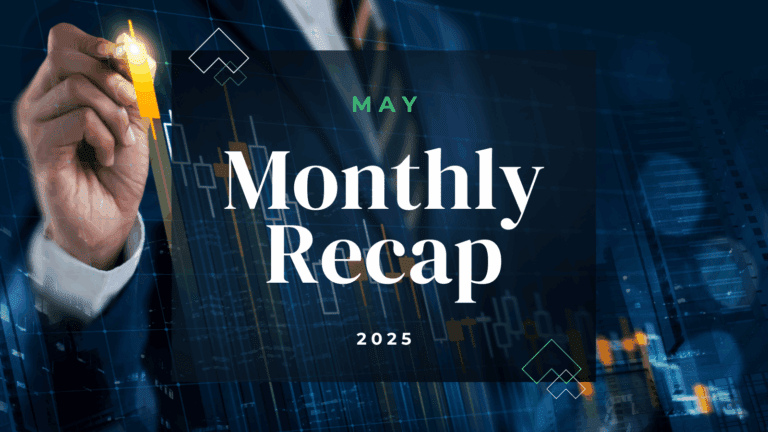By Aoifinn Devitt, CFP® – Chief Investment Officer
The quarter started with a bang but ended with a whimper, as a surging stock market in July was cut short by a more subdued month of August and then an abrupt September sell-off – the September effect in full swing[1]. Summer vacation travel exploded despite sharply increased domestic airfares, and inflation itself seemed to settle in for a summer pause. The July number showed a sharp fall in core inflation (inflation ex energy and food) and coming tantalizingly close to the 2% target – coming in at 3% overall. This encouraged the Fed to pause after 11 rate hikes (which it did – twice), although the transmission of the earlier rate hikes is still being felt.
The economy moved on, assuredly, from the regional bank crises earlier in the year and the consumer remained strong as employment was supported and corporate earnings were sustained. Let’s examine some of the key economic developments over the quarter and discuss what it means for portfolio performance and the rest of the year.
Economic Review
In “The Sun Also Rises” by Ernest Hemingway there is the classic quote: “How did you go bankrupt? Two ways. Gradually, then suddenly.” Inflation’s decline has also been in two stages – a short gradual decline and then a sudden drop in July. The drop is by no means finite, but as the chart below shows, the decline is now in place globally albeit with a volatile and somewhat lumpy trajectory. We can expect inflation to follow a similar path in the months ahead – with volatility in the price of energy and the still stubborn push of shelter likely to muddy the outcome for some time.

Rates on the other hand have moved in the opposite direction as robust economic data supported the potential of a “higher for longer environment”. The direction of likely travel of global rates is shown in the chart below – although the recent experience of higher yields in longer term government paper is suggesting that the “pivot point” and when rates finally start to fall will be pushed out further into the future. This has important implications for mortgage rates – which are already close to 8% and at highs not seen in over 20 years – as well as for the affordability of financing for both consumers and businesses. The longer rates remain at these levels, the broader the “squeeze” from higher rates will be as debt comes up for refinancing, so it is highly likely that we have not yet seen the full transmission effect of these higher rates.

As the chart below shows, the probability of a recession is receding at this time as the buoyancy of the consumer is propelled by a strong employment picture (the recent September jobs report surprised on the upside – with job openings rising and new payrolls increasing by more than expected). Excess savings are still a factor too – evidenced by the record levels of funds in money market funds, although we have been hearing more and more about rising credit card, auto loan and other loan delinquencies, which in some segments have risen to levels last seen in the run up to 2008. This suggests that the squeeze of inflation is being felt at the margin, albeit not in a broad way just yet.

Markets
Markets remain a bright spot in the year to date, despite a spell of retrenchment in the second half of the last quarter that drove most major indexes lower. As noted below, however, the market strength has not been broad-based and featured more notably in the larger cap and higher growth end of the equity spectrum.

We have spoken at length about the concentration of equity performance, particularly in US indices and as the chart below shows there has been dramatic outperformance of the Magnificent Seven Tech stocks. It can be seen that the magic circle of stocks has evolved since the original FAANG classification as set out below.


The performance of these stocks stands in sharp contrast to the rest of the market as the chart shows, which suggests some interesting insights about the nature of equity momentum today. The narrowness of the rally suggests that investors are feeling somewhat less adventurous and daring than we might see in a true bull market – and are instead seeking “safety” in the sectors that have worked well in the recent past. Other sectors such as utilities and healthcare still have strong fundamental drivers (e.g. the policy change of the Inflation Reduction Act, the scale of future infrastructure investment) but they have been largely overlooked. So, is the equity strength a bit misleading and is there a little lower in conviction than the numbers suggest?
Portfolio outlook
At Moneta we are mindful of the current attractive yields available in fixed income investments – especially now that inflation is more muted, making the after inflation yield more attractive. However, we would caution that there could be some near-term volatility across the entire fixed income complex while the future outlook for rates is uncertain. This should be borne in mind when allocating to bonds – the total return experienced may not be the same as the yield it “says on the tin”. We remain optimistic regarding equities given the lack of participation by other sectors outside tech, and believe that these other sectors should and will receive attention as more clarity on the economic picture emerges.
Inflation, while subdued, remains elevated relative to the overall Fed target, and we continue to recommend building inflation resilience into portfolios through inclusion of inflation participation assets such as real estate and real assets – in addition to equities, which provide some implicit inflation protection.
As we look to year-end, we are factoring in more volatility from geopolitical surprises, such as that tragically playing out in Israel and surrounding areas. While geopolitics have not recently had a significant effect on markets, they do add another layer to the “wall of worry” that is casting a long shadow. We will be watching to see how much it darkens the buoyant consumer mood as the holiday season rolls in.
[1] September is known as one of the worst months as the S&P 500 Index has averaged -0.7% in September relative to a 1.0% average for all months since 1970.
DISCLOSURES
© 2023 Advisory services offered by Moneta Group Investment Advisors, LLC, (“MGIA”) an investment adviser registered with the Securities and Exchange Commission (“SEC”). MGIA is a wholly owned subsidiary of Moneta Group, LLC. Registration as an investment adviser does not imply a certain level of skill or training. The information contained herein is for informational purposes only, is not intended to be comprehensive or exclusive, and is based on materials deemed reliable, but the accuracy of which has not been verified.
Trademarks and copyrights of materials referenced herein are the property of their respective owners. Index returns reflect total return, assuming reinvestment of dividends and interest. The returns do not reflect the effect of taxes and/or fees that an investor would incur. Examples contained herein are for illustrative purposes only based on generic assumptions. Given the dynamic nature of the subject matter and the environment in which this communication was written, the information contained herein is subject to change. This is not an offer to sell or buy securities, nor does it represent any specific recommendation. You should consult with an appropriately credentialed professional before making any financial, investment, tax or legal decision. An index is an unmanaged portfolio of specified securities and does not reflect any initial or ongoing expenses nor can it be invested in directly. Past performance is not indicative of future returns. All investments are subject to a risk of loss. Diversification and strategic asset allocation do not assure profit or protect against loss in declining markets. These materials do not take into consideration your personal circumstances, financial or otherwise.
DEFINITIONS
Inflation, as generally represented by the Consumer Price Index (CPI), is a measure of prices paid by consumers for a market basket of consumer goods and services. The yearly growth rates represent the inflation rate.
Central bank rates are the target interest rate set by the central bank in its efforts to influence short-term interest rates as a part of its monetary strategy. The specific policy indexes are as follows: United States: Federal Funds Rate. United Kingdom: The Bank of England Official Bank Rate. Eurozone: The European Central Bank Main Refinancing Operations Announcement Japan: The Bank of Japan Policy-Rate Balance Rate. China: The CFETS SHIBOR Fixing 3-Month Index, which is a quotation obtained daily by 18 major banks. India: The Reserve Bank of India REPO Rate Policy. Brazil: The Brazil Selic Target Rate.
Inflation rate forecasts and central bank forward rate estimates are the Bloomberg weighted averages of sell side analyst forecasts.
Median forecasted probability of recession are derived from latest monthly & quarterly surveys conducted by Bloomberg.
The S&P 500 Index is a free-float capitalization-weighted index of the prices of approximately 500 large-cap common stocks actively traded in the United States.
The Russell 2000® Index is an index of 2000 issues representative of the U.S. small capitalization securities market.
The MSCI EAFE Index is a free float-adjusted market capitalization index designed to measure the equity market performance of developed markets, excluding the U.S. and Canada.
The MSCI Emerging Markets Index is a float-adjusted market capitalization index that consists of indices in 21 emerging economies.
Bloomberg U.S. Treasury Bond Index includes public obligations of the US Treasury, i.e. US government bonds. Certain Treasury bills are excluded by a maturity constraint. In addition, certain special issues, such as state and local government series bonds (SLGs), as well as U.S. Treasury TIPS, are excluded.
The Bloomberg U.S. Aggregate Bond Index is an index, with income reinvested, generally representative of intermediate-term government bonds, investment grade corporate debt securities and mortgage-backed securities.
The Bloomberg US Corporate High Yield Bond Index measures the USD-denominated, high yield, fixed-rate corporate bond market. Securities are classified as high yield if the middle rating of Moody’s, Fitch and S&P is Ba1/BB+/BB+ or below. Bonds from issuers with an emerging markets country of risk, based on the indices’ EM country definition, are excluded.
The FTSE Nareit All Equity REITs Index is a free-float adjusted, market capitalization-weighted index of U.S. equity REITs. Constituents of the index include all tax-qualified REITs with more than 50 percent of total assets in qualifying real estate assets other than mortgages secured by real property.
The S&P Global Listed Infrastructure index measures the performance of global companies that are engaged in infrastructure and related operations. It provides liquid and tradable exposure to 75 companies from around the world that represent the listed infrastructure universe. To create diversified exposure, the index includes three distinct infrastructure clusters: utilities, transportation and energy.







